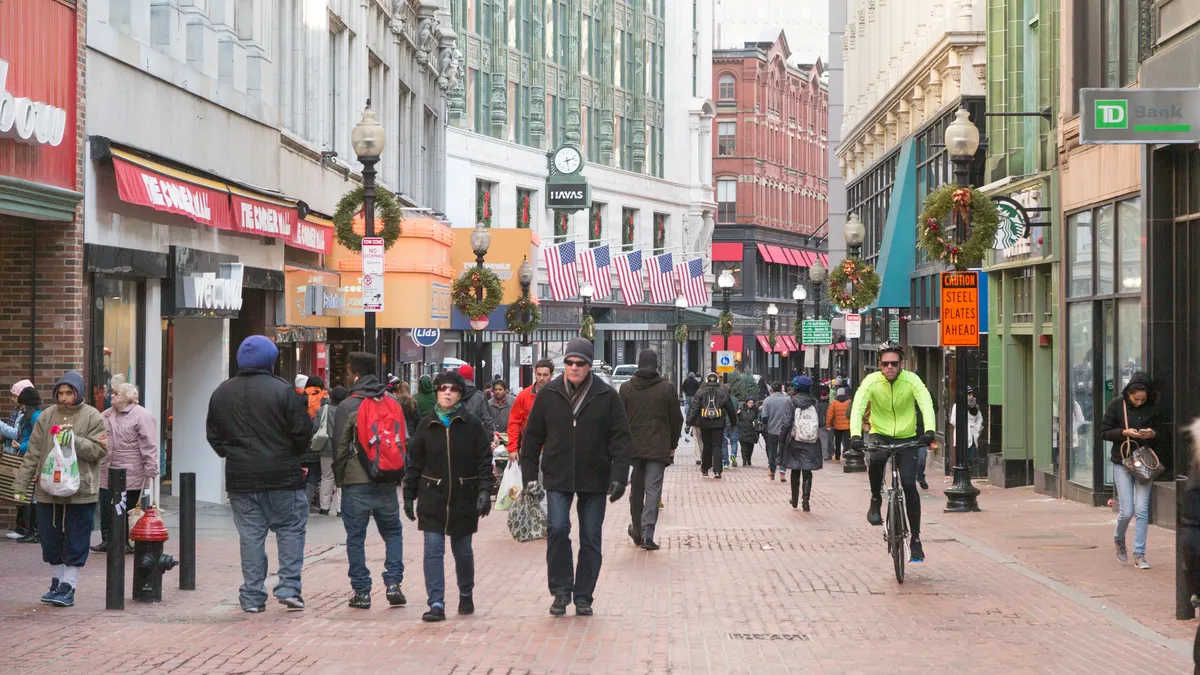Dive Brief:
- Holiday season sales growth will remain steady despite some contradictions in the latest federal economic and jobs data, the National Retail Federation said Thursday. The NRF is maintaining its retail sales projections of a 2.5% to 3.5% year-over-year increase, according to Jack Kleinhenz, the organization’s chief economist.
- A recent dip in jobs numbers and the slowed growth of the gross domestic product in the third quarter are likely due to the impact of Hurricanes Helene and Milton and labor union strikes. Overall, the NRF said, employment gained 104,000 jobs on a three month average and GDP growth was strong, continuing 10 consecutive quarters of increases.
- Salaries and wages were up 3.9% from a year ago as of September, as measured by the federal Employment Cost Index. While that’s the slowest growth since late 2021, Kleinhenz said it’s above inflation. The Personal Consumption Expenditures Price Index, the Fed’s preferred inflation gauge, fell to a year-over-year increase of 2.1% in September, just above the federal government’s 2% target and the lowest it's been since 2021, the NRF said.
Dive Insight:
While it’s too soon to say how last week’s election results might affect the economy for the rest of the year and beyond, the overall holiday season economic outlook still looks positive based on the latest economic indicators, Kleinhenz said.
“Putting all these considerations together, this holiday season looks very good,” Kleinhenz said. “Households are starting the season in decent financial shape and are managing the constraints of their paychecks, with growth in wages and salaries still supportive of a steady pace of spending.”
However, possible tariffs, which could be enacted as soon as January, may weaken consumers’ spending power by $78 billion to $80 billion if their full scope takes effect, analysts with Telsey Advisory Group, led by Dana Telsey, said Friday in a note following a conference call with the NRF about its latest sales outlook.
These tariffs, based on NRF analysis, are poised to have a negative effect on consumer spending, especially on toys, apparel, furniture, appliances and footwear, and could have an inflationary impact of 0.4%to 0.5%.
Still, the NRF said on Oct. 15 that the economy “remains fundamentally healthy and continues to maintain its momentum.” The organization expects this year’s holiday season retail sales will increase, reaching a total ranging from $979.5 billion to $989 billion in November and December.
“Given third-quarter spending performance and comprehensive upward revisions in late September for income, spending and the savings rate, I have increased confidence in the economy’s strength and the near-term outlook,” Kleinhenz said.
The NRF also said in October that consumer spending for the season is expected to reach a record high of $902 per person across gifts, food, decorations and other seasonal items.















